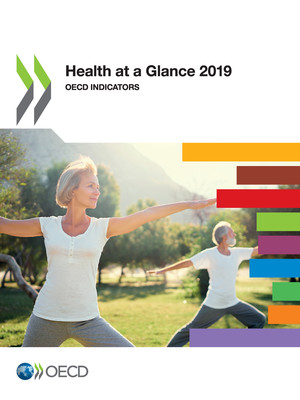copy the linklink copied!Life expectancy by sex and education level
Women live longer than men do in all OECD and partner countries. This gender gap averaged 5.3 years across OECD countries in 2017 – life expectancy at birth for women was 83.4 years, compared with 78.1 years for men (Figure 3.4). The gender gap in life expectancy, though, has narrowed by one year since 2000, reflecting more rapid gains in life expectancy among men in most countries.
In 2017, life expectancy at birth for men in OECD countries ranged from around 70 years in Latvia and Lithuania to 81 years or higher in Switzerland, Japan, Iceland and Norway. For women, life expectancy reached 87.3 years in Japan, but was less than 80 years in Mexico, Hungary and Latvia.
Gender gaps are relatively narrow in Iceland, the Netherlands, Norway, Sweden, New Zealand, Ireland, the United Kingdom and Denmark – at less than four years. However, there are large gender differences in many central and eastern European countries, most notably in Latvia and Lithuania (around ten years), Estonia (around nine years) and Poland (around eight years). In these countries, gains in longevity for men over the past few decades have been much more modest. This is partly due to greater exposure to risk factors among men – particularly greater tobacco use, excessive alcohol consumption and less healthy diets – resulting in more deaths from heart diseases, cancer and other diseases. For partner countries, the gender gap is around ten years in the Russian Federation, and just over seven years in Colombia, Brazil and South Africa. China and India have small gender gaps, of about three years.
Socioeconomic inequalities in life expectancy are also evident in all OECD countries with available data (Figure 3.5). On average among 26 OECD countries, a 30-year-old with less than an upper secondary education level can expect to live for 5.5 fewer years than a 30-year-old with tertiary education (a university degree or equivalent). These differences are higher among men, with an average gap of 6.9 years, compared with an average gap of 4.0 years among women.
Socioeconomic inequalities are particularly striking among men in many central and eastern European countries (Slovak Republic, Hungary, Poland, Czech Republic, Latvia), where the life expectancy gap between men with lower and higher education levels is over ten years. Gaps in life expectancy by education are relatively small in Turkey, Canada and Sweden.
More deaths amongst prime-age adults (25-64 years) with lower education levels drive much of this education gap in life expectancy. Mortality rates are almost four times higher for less educated prime-age men, and about twice as high for less educated prime-age women, compared to those with tertiary education (analysis based on data from 23 OECD countries). Differences in mortality rates among older men and women, while less marked, remain higher among the less educated, driven mainly by more deaths from circulatory diseases and cancer (Murtin et al, 2017[1]).
Higher smoking rates amongst disadvantaged socioeconomic groups is an important contributor to gaps in life expectancy by education or other measures of socioeconomic status. Other risk factors are also more prevalent among disadvantaged groups, notably excessive alcohol consumption among men, and higher obesity rates for men and women (see indicators in Chapter 4 on “Risk factors for health”).
Life expectancy at birth measures how long, on average, people would live based on a given set of age-specific death rates. Data on life expectancy by sex comes from Eurostat for EU countries, and from national sources elsewhere.
For life expectancy by education level, data were provided directly to the OECD for Australia, Austria, Belgium, Canada, Chile, France, Iceland, Israel, Latvia, Mexico, Netherlands, New Zealand, Switzerland, Turkey and the United Kingdom. Data for the remaining European countries were extracted from the Eurostat database. The International Standard Classification of Education (ISCED) 2011 is the basis for defining education levels. The lowest education level – ISCED 0-2 – refers to people who have not completed their secondary education. The highest education level – ISCED 6-8 – refers to people who have completed a tertiary education (a university degree or equivalent).
Not all countries have information on education as part of their deaths statistics. In such cases, data linkage to another source (e.g. a census) containing information on education is required. Data disaggregated by education are only available for a subset of the population for Belgium, the Czech Republic and Norway. In these countries, the large share of the deceased population with missing information about their education level can affect the accuracy of the data.
References
[1] Murtin, F. et al (2017), “Inequalities in Longevity by Education in OECD Countries: Insights from New OECD Estimates”, OECD Statistics Working Papers, No. 2017/02, OECD Publishing, Paris, https://doi.org/10.1787/6b64d9cf-en.
[2] OECD (2019), Health for Everyone? Social Inequalities in Health and Health Systems, OECD Publishing, Paris, https://doi.org/10.1787/3c8385d0-en.




